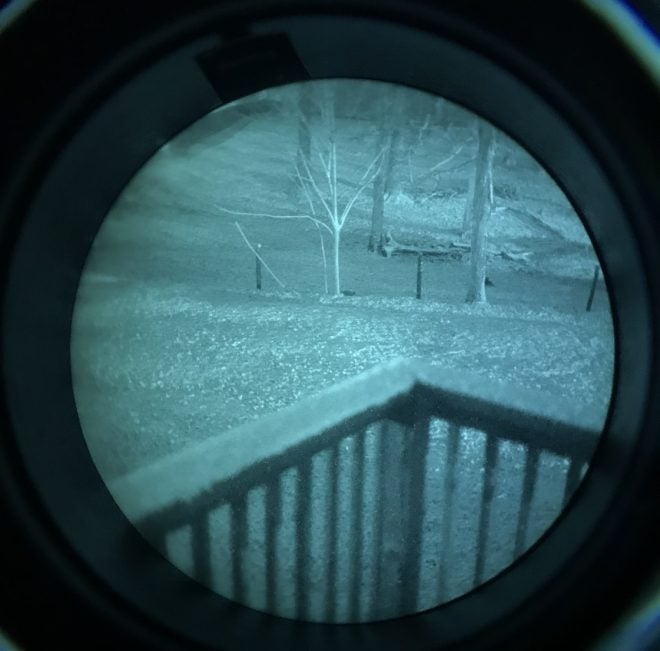What is night vision? When we think of night vision we normally visualize images from the iconic green phosphorous image intensifier seen in countless movies and video games. However, we often do not realize that thermal is also an important component of night vision technology as well. Like firearms, night vision is yet just another tool that if used properly can be significantly beneficial to the user. The basic premises behind night vision is rather self explanatory, as a tool that allows the user to see in the dark.
Image Intensifiers
Image intensifiers are used to intensify or amplify ambient light so the user can better see in the dark. In areas with no light, image intensifiers can also utilize infrared light or IR light. IR light is not visible to the human eye. The image intensifiers take photons, convert them to electrons, multiply the electrons, and then convert the electrons back to photons through a phosphor screen in order to produce the image we see.
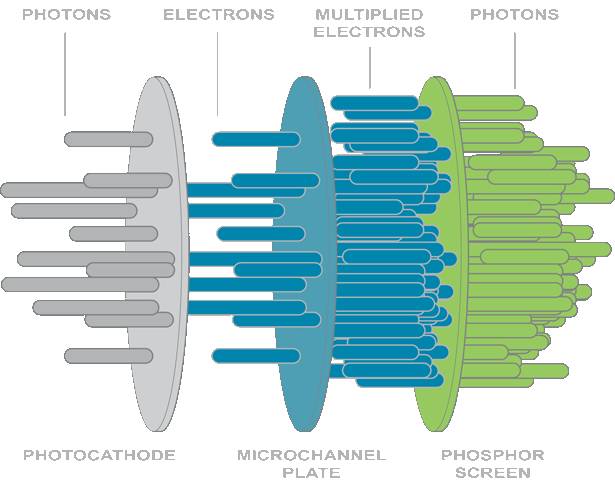
This graphic provides a visual reference explaining image intensifier technology.
Source: https://tnvc.com/technology/
This system gives us the best opportunity to identify a friend from a foe.
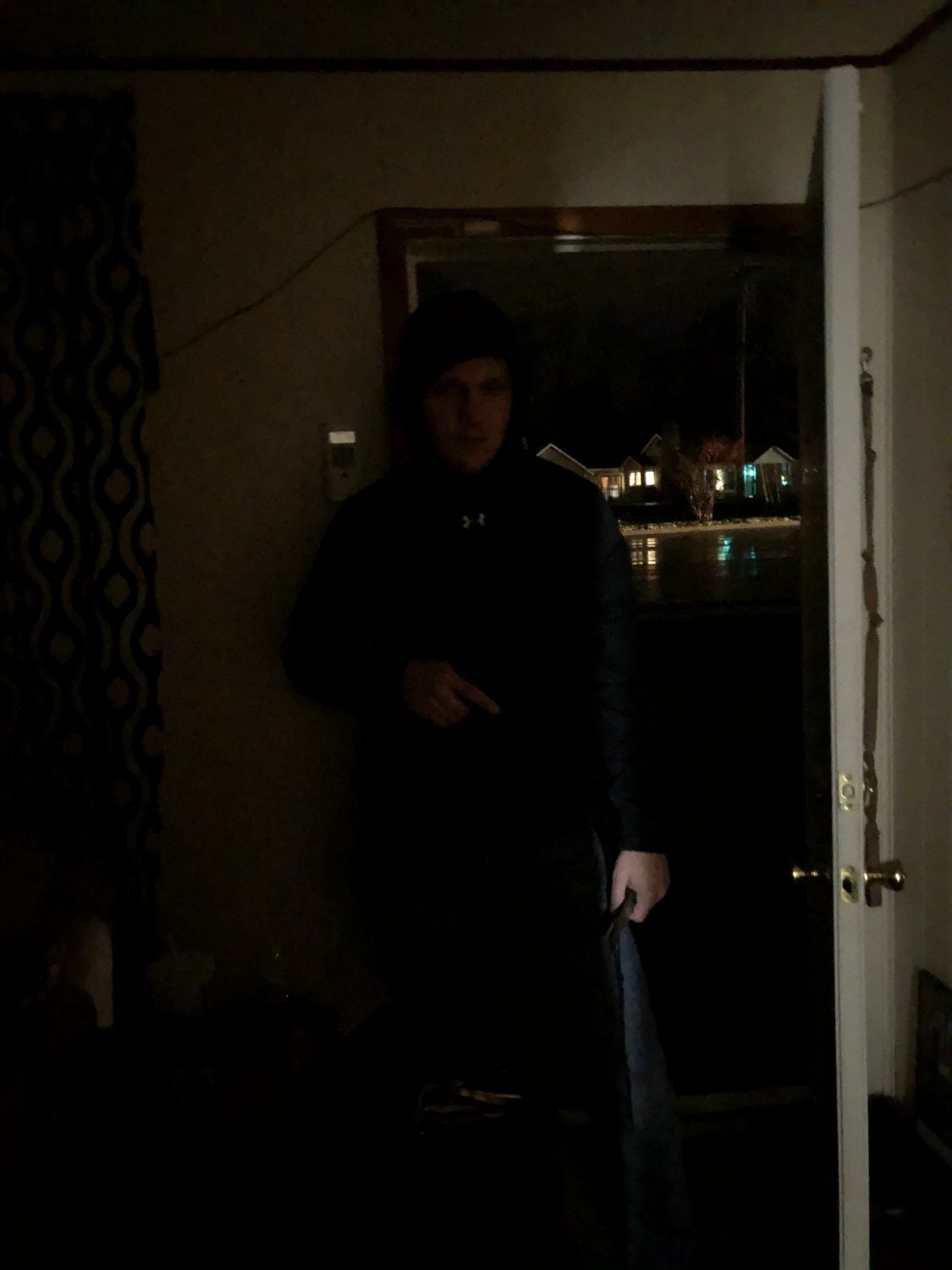
Notice even when the subject is somewhat backlit identification is extremely difficult under these lighting conditions.
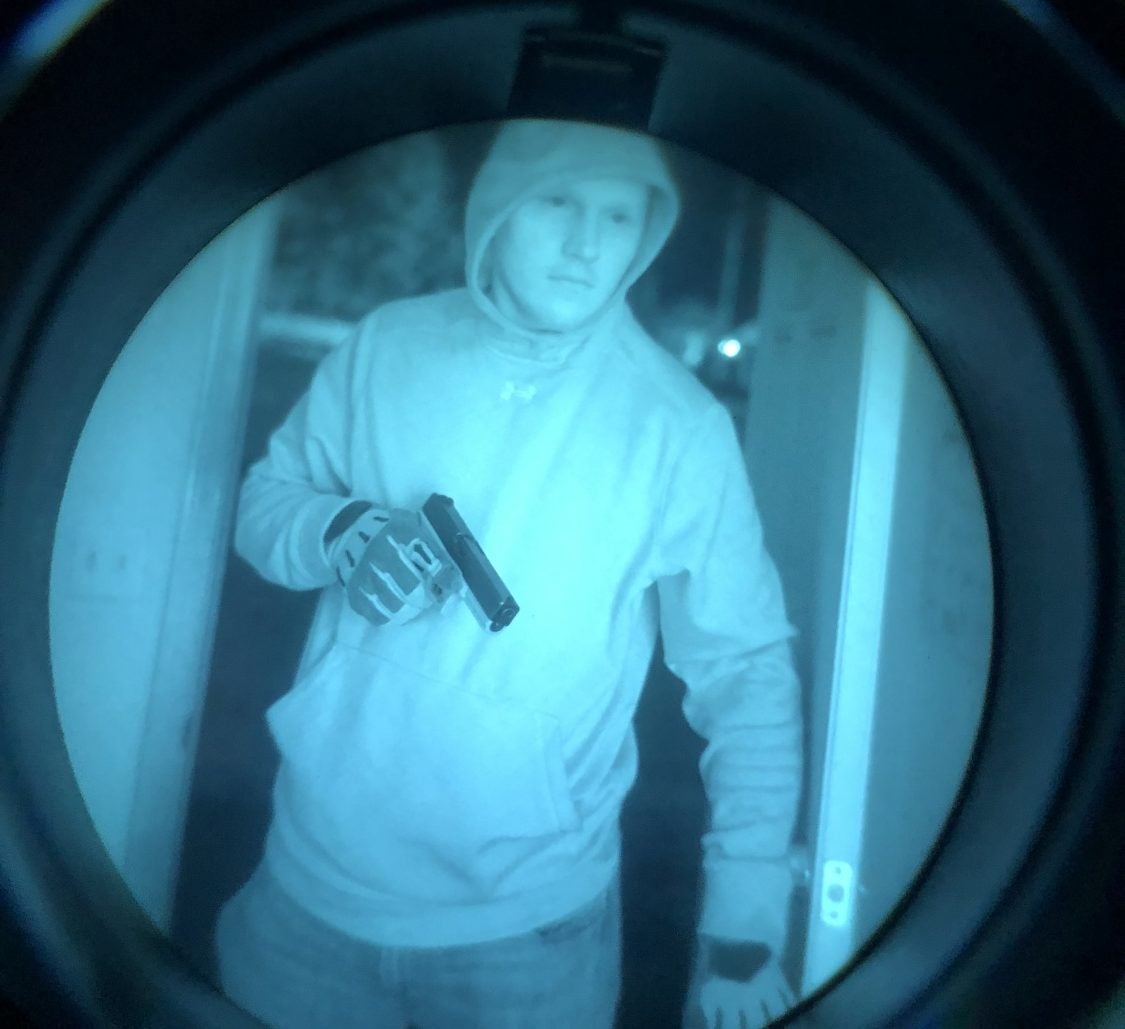
Here we can not only identify the individual but we can also identify a pistol in his gloved hand.
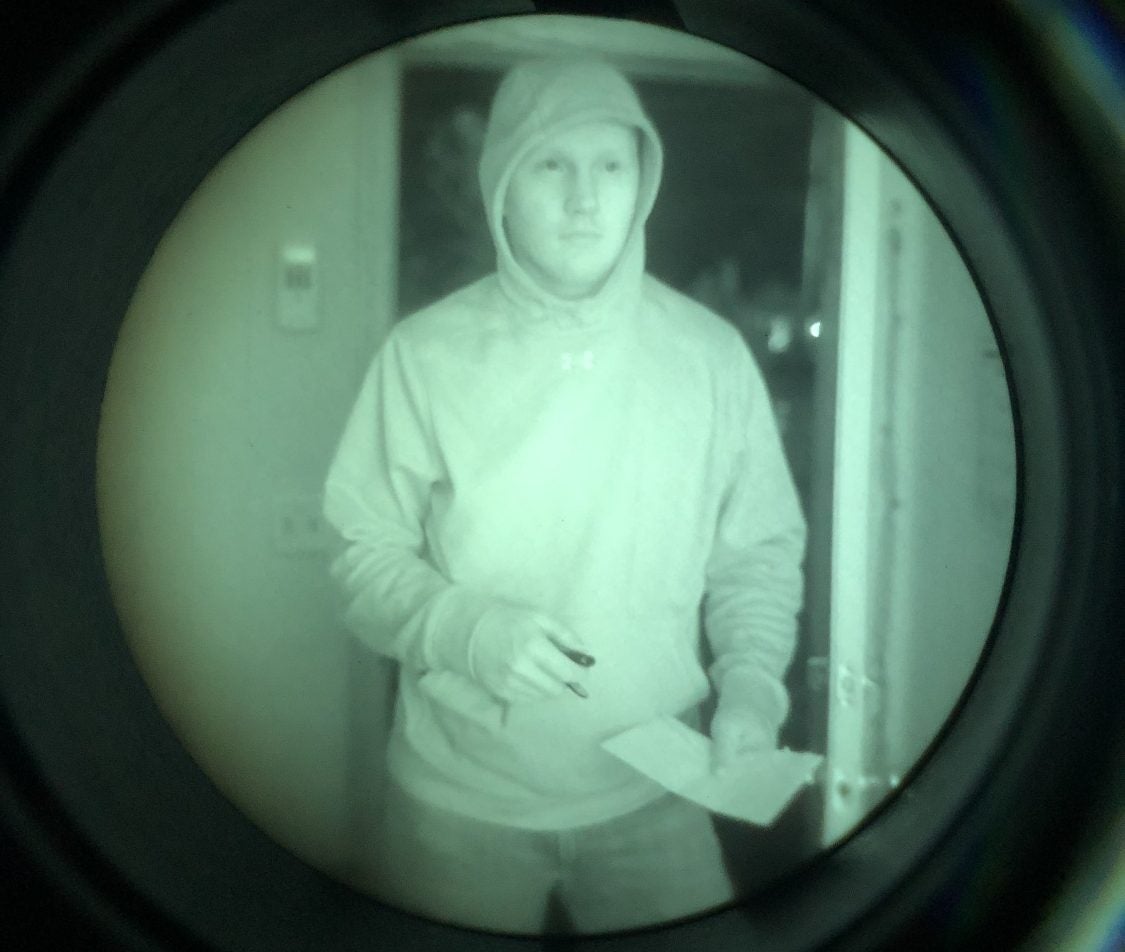
Not only can we see that he is carrying keys and an envelope but we can easily see facial features and get a positive ID.
While the image is set at a single focus point in which objects farther or closer are not in focus, the intensifiers can be manually adjusted for focus at varying distances. Since image intensifiers are simply utilizing light, barriers such as a windshield or thin glass do not present much more of an issue for identification than such barriers would make during the day. For threat identification and navigation image intensifiers are extremely helpful.
Thermal Technology
Thermal technology utilizes thermal-infrared waves. These waves make up the largest portion of the infrared spectrum ranging from 3 to 30 microns. As opposed to the near and mid infrared sections thermal infrared is emitted from the source rather than reflected. IR energy is released in varying amounts based on the amount of heat radiating from the source.
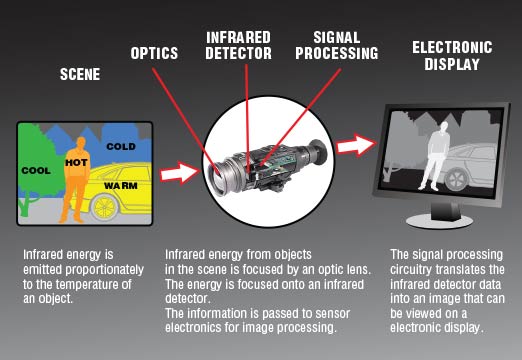
Above we see how the IR energy is converted to an image that allows us to visually discern variations in temperature. Source: https://www.atncorp.com/howthermalimagingworks
Using thermal technology the user can easily identify differences in heat and therefore can easily see the outline of a human or creature. This helps the user quickly find a warm body against a cooler background. However, facial features can not be easily identified and threat ID is difficult. Thermal units also do not perform well with barriers.
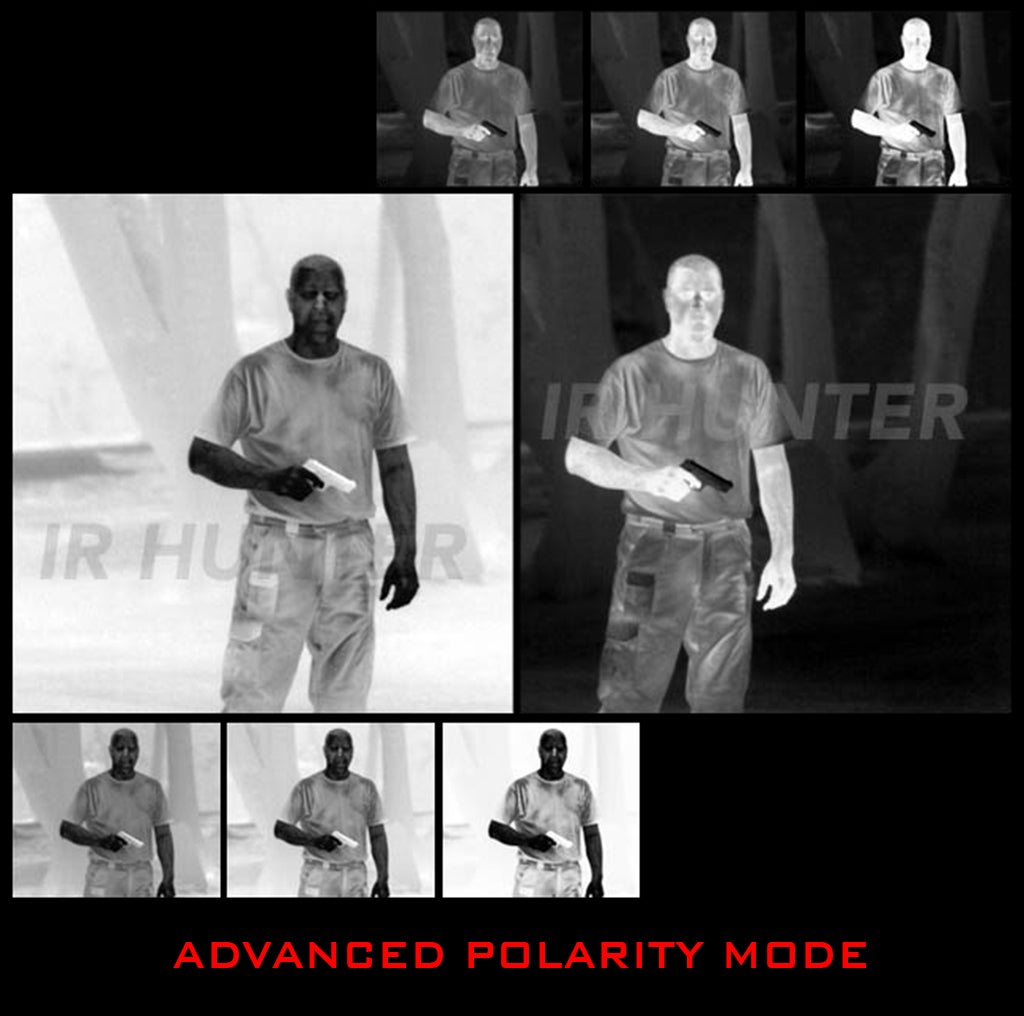
Notice that the thermal unit definitely helps identify the location of a heat source but facial features are not recognizable.
Source: https://www.midwayusa.com/product/1018945249/trijicon-ir-patrol-m250-extended-range-thermal-monocular-45x-19mm-640×480-stadiametric-rangefinder-black
Using a thermal unit you can not obtain a temperature difference through a window of a vehicle or the wall of a building. Unlike image intensifiers, thermal units can be used in any lighting condition. Thermal units also require no light to function. This eliminates problems with a light source visible to opposition possessing an image intensification device.
Conclusion
Many often do not think to combine the two technologies. While expensive, using a thermal unit to scan an area and then an image intensifier to identify the heat signature can provide a significant force multiplier. Night vision is nothing more than a tool and learning which tools combine to produce the best results is extremely beneficial. Newer units like the PSQ-36 now integrate both thermal and image intensification technology into a single unit.
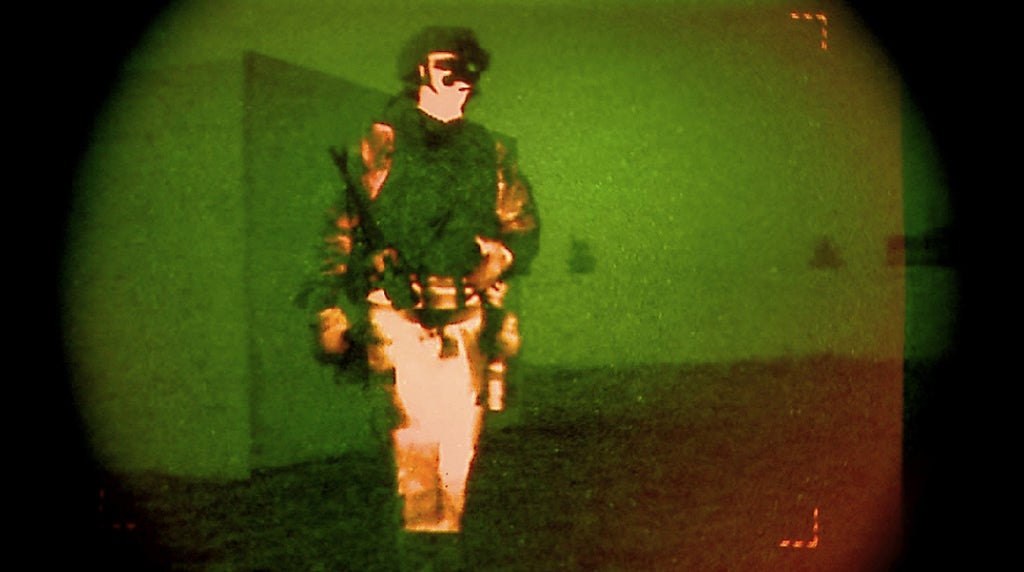
The PSQ-36 allows standard thermal overlay as seen in this picture as well as an outline setting to trace the outside of the heat source. Source: https://tnvc.com/shop/l-3-anpsq-36-fgs/
 Your Privacy Choices
Your Privacy Choices
